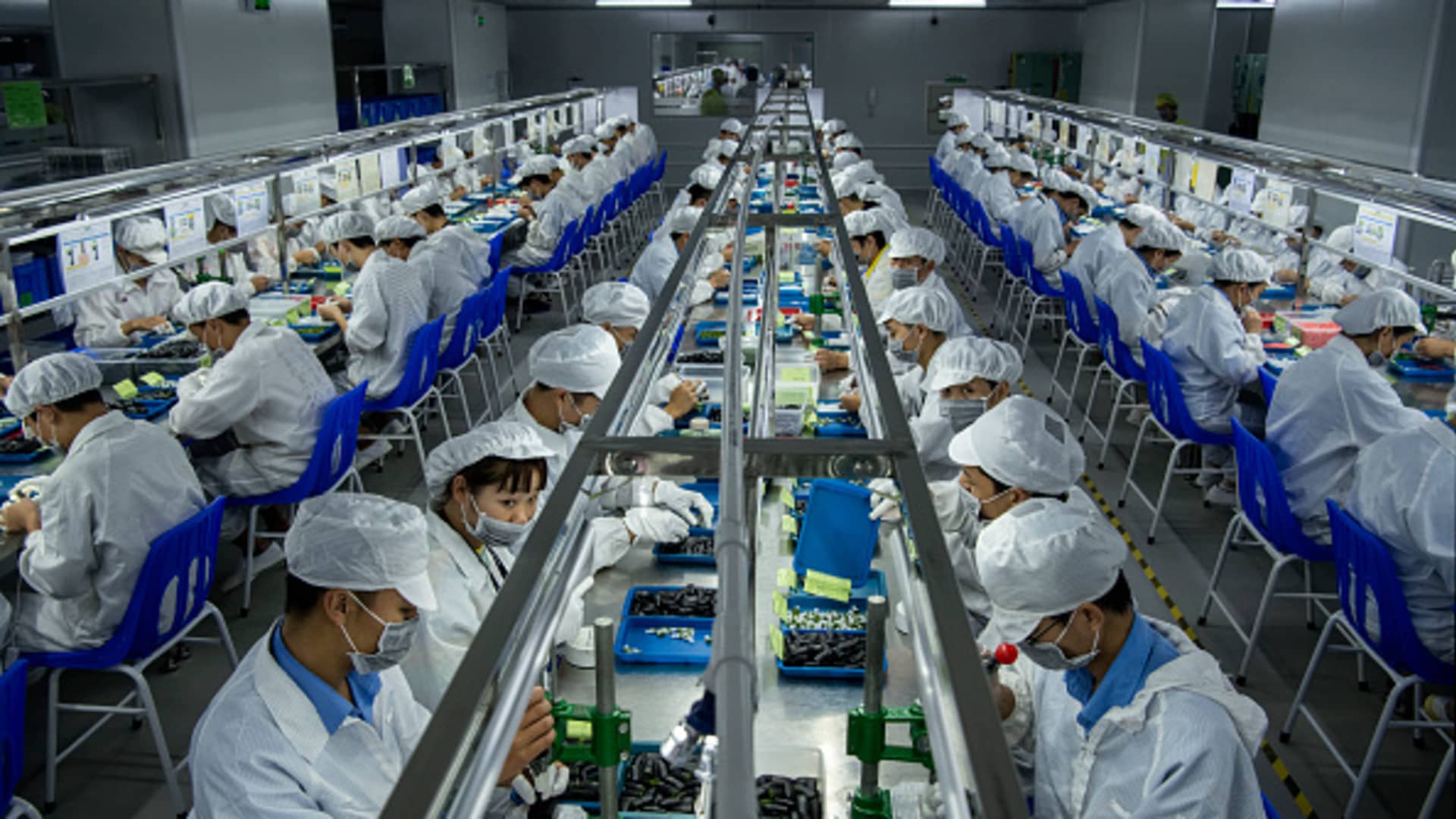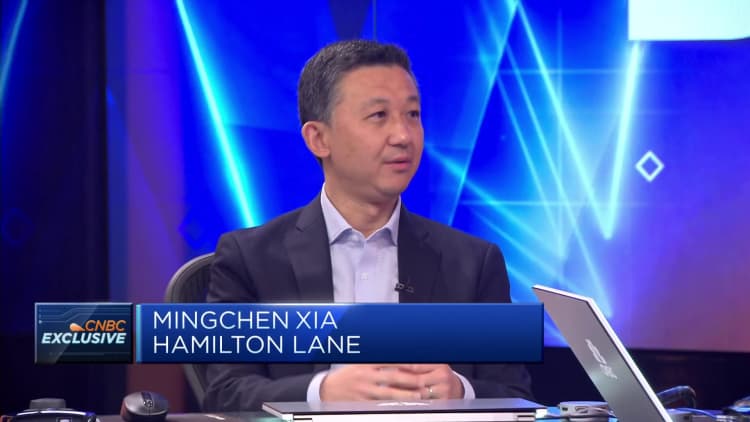China’s retail sales surprise with faster growth, up 4.6% in August


Chinese laborers working at a construction site at sunset in Chongqing, China on March 6, 2005.
China Photos | Getty Images
BEIJING — China’s retail sales and industrial production picked up pace in August with better-than-expected growth, according to National Bureau of Statistics data released Friday.
Retail sales grew by 4.6% in August from a year ago, beating expectations for 3% growth forecast by a Reuters poll. The increase was also faster than the 2.5% year-on-year pace in July.
Industrial production grew by 4.5% in August from a year ago, better than the 3.9% forecast and faster than the 3.7% increase reported for July.
Fixed asset investment, however, grew by 3.2% year-on-year in August on a year-to-date basis. That missed expectations for a 3.3% increase and was slower than the 3.4% pace reported as of July.
The figure was dragged down by a steeper drop in real estate investment, and a slowdown in infrastructure investment. Only manufacturing saw the pace of investment pick up.
Statistics bureau spokesperson Fu Linghui said the real estate market was still in a period of “adjustment” and noted declines in sales and investment.
The statistics bureau release described August data as showing “marginal improvement.”
“The national economy showed good momentum of recovery with high-quality development making solid progress and positive factors accumulated,” the statistics bureau release said. “However, we should be aware that many unstable and uncertain factors in the external environment still exist.”
Within retail sales, online sales of physical goods rose by 7.6% in August from a year ago, according to CNBC calculations of official data accessed via Wind.
Autos saw sales rise by 1.1%. Among the categories with faster growth were cosmetics, up by 9.7% and communication equipment, up by 8.5% in August from a year ago. Catering sales grew by 12.4% during that time.
More rate cuts
Late Thursday, the People’s Bank of China said that it was cutting the amount of cash that banks need to have on hand by 25 basis points, effective Friday. It was the second reserve requirement ratio cut this year since one in March.
In the last several weeks, Beijing has announced a slew of measures to support the real estate market and consumption.
Workers make pods for e-cigarettes on the production line at Kanger Tech, one of China’s leading manufacturers of vaping products, on September 24, 2019 in Shenzhen, China.
Kevin Frayer | Getty Images News | Getty Images
Monetary policy has remained relatively loose compared with aggressive rate hikes in the U.S. and Europe.
Also effective Friday is a reduction in the foreign exchange reserve requirement ratio for financial institutions to 4%, from 6%. The planned cut was announced two weeks ago.
The central bank has also trimmed other benchmark rates, such as the one-year loan prime rate.
China’s slowing economic growth
Moody’s on Thursday downgraded its outlook on China’s property sector to negative from stable. The firm expects sales to fall by around 5% over the next six to 12 months.
“While the Chinese government has recently strengthened policy support for the property sector, we expect the impact on property sales to be short-lived and differentiated between tiers of cities,” Cedric Lai, vice president and senior analyst at Moody’s, said in a release.
Uncertainty about future income has kept consumer spending relatively muted.
China’s consumer price index rose by 0.1% year-on-year in August, reversing a decline in July. Core CPI, which excludes food and energy prices, increased by the same 0.8% year-on-year pace during both months.
— This is breaking news. Please check back for updates.









